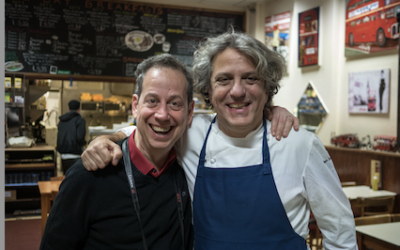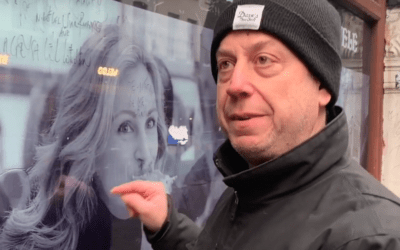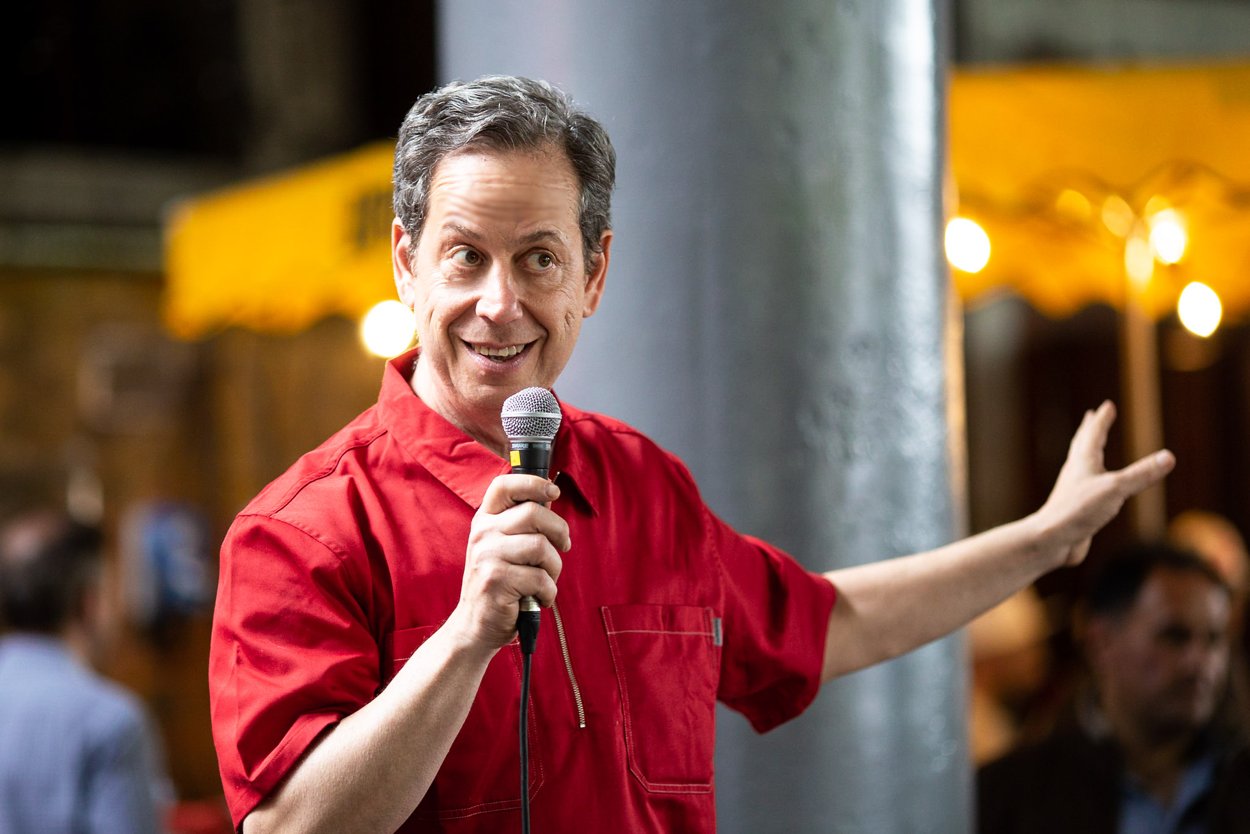 Behind the top-scoring performance of Michael Phillips in finals of the 2010 World Barista Championship, held on the 25th of June at London’s Olympia Exhibition Centre, was a single idea: how can the processing of coffee beans influence a barista’s calibrations?
Behind the top-scoring performance of Michael Phillips in finals of the 2010 World Barista Championship, held on the 25th of June at London’s Olympia Exhibition Centre, was a single idea: how can the processing of coffee beans influence a barista’s calibrations?
That may at first seem a snore of a technical question unlikely to electrify the spectator stands. Indeed it was the efficiency and flair of this fluid barista from Intelligentsia Coffee in Chicago – and possibly also his white suspenders – that rocked the Olympia’s great steel and glass ceiling, not dry tales of wet processing. But with his bean-splitting challenge, Phillips was taking the most fundamental responsibility of a barista – brewing and serving a coffee to its best advantage – to a new level. And the judges, sadly the only ones in the arena who got to sample the espressos, cappuccinos and signature espresso drinks prepared in competition, were sufficiently impressed to award the USA its first World Barista Champion.
 For his signature drink or, in his case, three signature drinks, Phillips chose three coffees from one terroir, the Coope Dopa Cooperative in Santa María de Dota, Tarrazú, Costa Rica. Same altitude, same microclimate, same bean varietals. The lone distinction? How three different farmers from a single cooperative chose to process these beans and how this in turn dictated subtle differences in the ways Phillips chose to roast, grind and dose them for espresso.
For his signature drink or, in his case, three signature drinks, Phillips chose three coffees from one terroir, the Coope Dopa Cooperative in Santa María de Dota, Tarrazú, Costa Rica. Same altitude, same microclimate, same bean varietals. The lone distinction? How three different farmers from a single cooperative chose to process these beans and how this in turn dictated subtle differences in the ways Phillips chose to roast, grind and dose them for espresso.

 Three customised espressos inspired three exotic signature recipes, requiring Phillips to prepare an astonishing total of 12 glasses (three drinks for each of the tasting judges) in a short time frame. A daunting task to be sure, especially as the high level of difficulty in his program up to that point had already been lost on many in attendance, myself included. To grind the three coffees to their optimal fineness and therefore extraction, Phillips found himself one grinder short.
Three customised espressos inspired three exotic signature recipes, requiring Phillips to prepare an astonishing total of 12 glasses (three drinks for each of the tasting judges) in a short time frame. A daunting task to be sure, especially as the high level of difficulty in his program up to that point had already been lost on many in attendance, myself included. To grind the three coffees to their optimal fineness and therefore extraction, Phillips found himself one grinder short.
“He had to think outside the box”, barista Tim Styles of London’s Penny University explained to me. “He only had two grinders. So what did he do? He brought in an extra hopper.”
 After his presentation in the finals I asked Phillips if he found it stressful to change grinder hoppers midway through a pressure-packed presentation performed while three technical judges poked their heads and clipboards in his tight workspace.
After his presentation in the finals I asked Phillips if he found it stressful to change grinder hoppers midway through a pressure-packed presentation performed while three technical judges poked their heads and clipboards in his tight workspace.
 “Piece of cake”, responded Phillips, less with swagger than levity. Thing is it was a big deal. From close in I could see his hands trembling as he poured liquids into glasses. I could almost feel his exhales of relief when his time was up and attention turned to the Greek finalist Stefanos Domatiotis.
“Piece of cake”, responded Phillips, less with swagger than levity. Thing is it was a big deal. From close in I could see his hands trembling as he poured liquids into glasses. I could almost feel his exhales of relief when his time was up and attention turned to the Greek finalist Stefanos Domatiotis.
 Changing coffees. Switching hoppers. Altering grinds. Adjusting doses. “Was all that necessary”?, I asked Phillips, minutes before the results were announced . “If that didn’t need to be done”, he reasoned “then they wouldn’t need me to do it”.
Changing coffees. Switching hoppers. Altering grinds. Adjusting doses. “Was all that necessary”?, I asked Phillips, minutes before the results were announced . “If that didn’t need to be done”, he reasoned “then they wouldn’t need me to do it”.
Spoken like a true barista.

 podium (l to r): Scottie Callaghan, Australia, 3rd
podium (l to r): Scottie Callaghan, Australia, 3rd
Michael Phillips, USA, 1st
Raul Rodas, Guatemala, 2nd





Michael, we are all proud of you and the magnificent presentation you made. Risky, gutsy… superb!
I was there and he kicked a**!!! congratulations Mike for your performance and for your choice of Costa Rican coffee 😉